BLOG, or DIE. Author Bio
Thursday, 24 March 2011
Ligonier Days
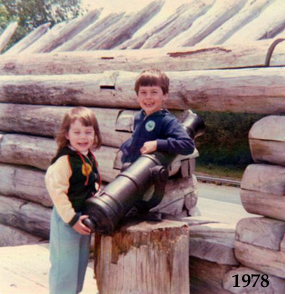 Whenever someone asks what sparked my interest in American history, I always give the same answer, my parents. Over the years I had some excellent teachers who cultivated my interest, but no one else promoted the subject more than my mom and dad. Looking back I fondly recall dozens of family trips to historical sites like Monticello, Gettysburg, Williamsburg and the Drake Oil Well. One of our favorite places, Fort Ligonier, wasn’t too far from our home in Pittsburgh. I remember traveling there on a number of occasions and credit that site in particular for my interest in 18th-century history.
Whenever someone asks what sparked my interest in American history, I always give the same answer, my parents. Over the years I had some excellent teachers who cultivated my interest, but no one else promoted the subject more than my mom and dad. Looking back I fondly recall dozens of family trips to historical sites like Monticello, Gettysburg, Williamsburg and the Drake Oil Well. One of our favorite places, Fort Ligonier, wasn’t too far from our home in Pittsburgh. I remember traveling there on a number of occasions and credit that site in particular for my interest in 18th-century history.
Unlike Fort Pitt, Fort Ligonier was completely reconstructed and therefore able to hold the attention of a hyper-active child like myself. I believe that my first exposure to re-enactors took place during “Ligonier Days” a three-day festival when living historians, dressed-up as British soldiers and Indians, demonstrated their weapons and tactics. The memory of that event is still very vivid as I was captivated by the experience.
Located in southwestern Pennsylvania, Fort Ligonier was constructed in 1758 for use as a British garrison. During its lifetime, the stronghold served multiple purposes including time as a port of passage for troops en route to Fort Pitt, and as a vital link for the British Army’s supply lines. A number of regulars were stationed there including the 60th Regiment of Foot (Royal Americans), the First Highland Battalion (Montgomery’s Highlanders), the 77th Regiment of Foot, a Royal Artillery detachment, the 94th Regiment of Foot (Royal Welsh Volunteers) and the 42nd Royal Highland Regiment of Foot (Black Watch). Fort Ligonier’s proximity to the French garrison at Fort Duquesne also made it a target.
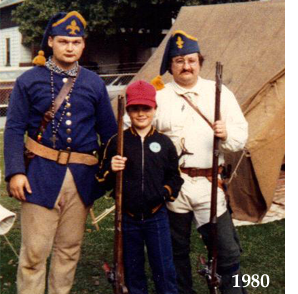 Originally referred to as “The Post at Loyalhanna,” Ligonier came under fire on October 12, 1758 during the French and Indian War. Still under construction, the garrison was barely able to repel its attackers who boasted much higher numbers. After decimating British troops who were stationed outside the walls, the French and Indians were driven back by artillery. As darkness fell the remaining forces renewed their attack before retreating back into the woods. The casualty reports following the four-hour assault differed greatly as the French reported taking 100 scalps and seven prisoners, while the British only reported 12 killed, 18 wounded, and 31 missing.
Originally referred to as “The Post at Loyalhanna,” Ligonier came under fire on October 12, 1758 during the French and Indian War. Still under construction, the garrison was barely able to repel its attackers who boasted much higher numbers. After decimating British troops who were stationed outside the walls, the French and Indians were driven back by artillery. As darkness fell the remaining forces renewed their attack before retreating back into the woods. The casualty reports following the four-hour assault differed greatly as the French reported taking 100 scalps and seven prisoners, while the British only reported 12 killed, 18 wounded, and 31 missing.
In November of that year General John Forbes assumed custody of the newly abandoned Fort Duquesne. He designated the site “Pittsburgh” to honor William Pitt, the acting Secretary of State. He then christened the fort known as Loyalhanna "Fort Ligonier," after his superior Sir John Ligonier, commander in chief in Great Britain.
During the Pontiac’s War of 1763, a coalition of Native American tribes attacked a number of forts in protest of British policies following the French and Indian War. Fort Ligonier was attacked twice and besieged by Indians who were eventually defeated at the Battle of Bushy Run. Three years later the fort, was decommissioned and handed over to a caretaker named Arthur St. Clair. In 1765, the Provost William Smith from the College of Philadelphia declared the importance of the site stating, “The preservation of Fort Ligonier was of the utmost consequence.”
Despite the absence of war the region around Fort Ligonier remained a dangerous one deep into the next decade. In November of 1777 a commissary named Samuel Craig Sr. was summoned to the garrison. While en route he was captured by Indians near an area called Chestnut Ridge. All efforts to locate the man failed, although his horse was found shot dead, surrounded by fragments of torn paper. Craig and his three eldest sons, John, Alexander and Samuel Jr., had served in the Revolutionary War prompting the belief that he had attempted to defend himself against hostiles.
Several acres of the garrison’s property were preserved and the above-ground elements were rebuilt. The inner-fort is 200 square-feet with four bastions, one on each corner. According to the site’s website the fort can be accessed by three gates where “…inside is the officers’ mess, barracks, quartermaster, guardroom, underground magazine, commissary, and officers’ quarters. Immediately outside the fort is General Forbes’s hut. An outer retrenchment, 1,600 feet long, surrounds the fort. Other external buildings include the Pennsylvania hospital (two wards and a surgeon’s hut), a smokehouse, a saw mill, bake ovens, a log dwelling and a forge.”
The transcripts of a journal detailing the fort's construction are available in the Report of the Commission to Locate the Site of the Frontier Forts of Pennsylvania. Volume Two, The Frontier Forts of Western Pennsylvania, Fort Ligonier by Clarence M. Busch, State Printer of Pennsylvania, 1896.
Today a museum compliments the fully-restored Fort Ligonier and features a collection of George Washington relics including his saddle pistols, an 11-page memoir on the French and Indian War and a Rembrandt Peale portrait. Washington had served there as a young colonel of the Virginia Regiment in service to the British Crown. A long-term installation titled “The World Ablaze: An Introduction to the Seven Years’ War” is on exhibit there. This unique collection features over 200 British, French and Native American items.
Not much has changed since I first visited Fort Ligonier as a kid. Each year thousands of tourists from all over the world travel to southwestern PA to experience life in the 1700’s. This includes busloads of children who flock to “Ligonier Days” just like I did. I have no doubt that there are plenty of future historians among them guaranteeing that the legacy of this historical gem will be preserved for generations to come. For more information or to plan your trip, visit the Fort Ligonier website.

Wednesday, 23 March 2011
Help Wanted
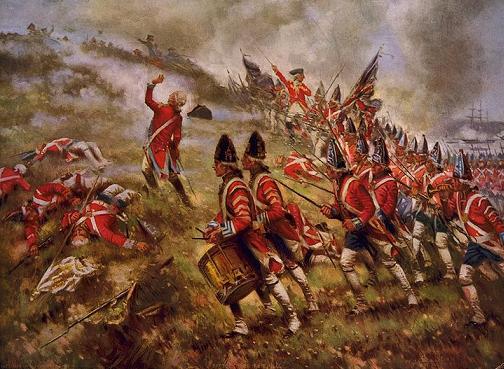
Many of my fellow historians and bloggers boast a long lineage of American ancestors, some going as far back as the Colonial-era. I know of several individuals with over 6-generations of kin, some who lived in the same state. Many of them are descended from veterans who participated in the Revolutionary and/or Civil War. I do not share their ancestry as relatives on both my father and mother’s immediate side did not settle here until the 1900’s. In fact, I am only a 2nd-generation American as my parent’s parents came over on the boat as children. This has prevented me from becoming anything other than an associate-member of heritage groups like the Sons of Confederate Veterans and the Sons of the Revolution.
That said, my grandmother on my mother’s side came to America from England. Her family had lived there for generations so it is quite possible that I have ancestors who participated in the Revolution on the British side. My question is for those of you who know how to research this type of genealogy: How would I even begin to trace someone back to the British ranks? Are there any resources or websites that would provide this kind of information? If I was searching for a soldier in the Civil War I would start by looking for pension papers, but I have no idea where to find data on Redcoats. Does it even exist? I have two last names to go on. Any advice or assistance would be greatly appreciated. Please email me here.

Tuesday, 22 March 2011
The Catholic-Muslim Connection
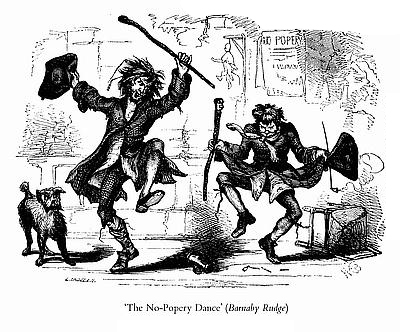
Baylor University scholar Thomas S. Kidd penned a thought-provoking Op-Ed in the March 10 online edition of The Christian Science Monitor titled Muslim Americans: What would Jesus (or George Washington) do?. In it he draws a parallel between the bigotry that was directed towards Catholics in early America and the angst that is directed towards Muslims today. Frankly, I’ve never made that connection until now. Just as Catholics were once feared by the Protestant majority, Muslims have become, in the minds of many Americans, the great spiritual enemy. This wasn’t always so. In fact, there was a time in America when Muslims were probably more likely to be accepted than Catholics.Following the Protestant Reformation of the 1500’s, a strong movement arose against the Catholic Church of England. Many immigrants brought their own anti-Catholicism beliefs with them to the New World where it eventually became a mainstream point of view. Their prejudices were based on political and theological differences. In 1642, the Colony of Virginia went so far as to enact a law prohibiting Catholics from settling there. A similar proclamation was drafted by the Massachusetts Bay Colony. The results were a drastic difference between protestant and Catholic settlers. Even "Catholic-friendly" states had remained unbalanced. In 1634, the state of Maryland recorded less than 3,000 Catholics out of a population of 34,000 (around 9% of the population).
Many of the Founding Fathers who preached of liberty and religious freedom distrusted the denomination. Samuel Adams echoed this sentiment stating, “What we have above everything else to fear is Popery.” Thomas Jefferson condemned the Roman Catholic clerics when he wrote, “History, I believe, furnishes no example of a priest-ridden people maintaining a free civil government,” and, “In every country and in every age, the priest has been hostile to liberty. He is always in alliance with the despot, abetting his abuses in return for protection to his own.” John Adams attended a Catholic mass in Philadelphia in 1774 and later ridiculed the rituals practiced by parishioners.
Looking back to those days of intolerance it may be surprising to find that it was General George Washington, a consummate politician, who rose above public opinion to support his Catholic countrymen. Washington was one of the first leaders to be outspoken on the subject of religious bigotry and he took a great risk by voicing an unpopular sentiment. In retrospect this move may have been far more practical than benevolent as Washington no doubt realized that he needed to win the favor of foreign countries that accepted Catholicism, especially France. He also required the service of Catholic military men both domestic and foreign. This included the Marquis de Lafayette, a Catholic Frenchmen who would play a major role in America’s fight for independence.
For years the country’s Englishmen had celebrated “Guy Fawkes Day” also known as “Pope’s Day” on November 5th. The importance of this date commemorated an incident known as “The Gunpowder Plot” in which a Catholic dissident named Guy Fawkes attempted to blow up Parliament in 1605. As part of the festivities, an effigy was burned, depicting the sitting Pope of the Catholic Church. In November of 1775 Washington issued general orders condemning what he called a “ridiculous and childish custom of burning the effigy of the pope.” He added that “American Catholics are among those we ought to consider as brethren embarked on the same cause, the defense of the general liberty of America.” By taking this stand against religious bigotry, Washington appeared both tolerant and diplomatic. This likely helped him to secure the French allies which he desperately needed to win the war. His entire proclamation read:
As the Commander in Chief has been apprized of a design form'd for the observance of that ridiculous and childish custom of burning the Effigy of the pope--He cannot help expressing his surprise that there should be Officers and Soldiers in this army so void of common sense, as not to see the impropriety of such a step at this Juncture; at a Time when we are solliciting, and have really obtain'd, the friendship and alliance of the people of Canada, whom we ought to consider as Brethren embarked in the same Cause. The defence of the general Liberty of America: At such a juncture, and in such Circumstances, to be insulting their Religion, is so monstrous, as not to be suffered or excused; indeed instead of offering the most remote insult, it is our duty to address public thanks to these our Brethren, as to them we are so much indebted for every late happy Success over the common Enemy in Canada.
Although anti-Catholic sentiment remained in America for some time to come, the official banning of “Pope’s Day” by one of America’s most revered leaders dampened the spirit tremendously. By 1776 the tradition was no longer acknowledged by the masses. This change in public opinion allowed the once ostracized denomination to flourish beside its protestant brethren. Today the Catholic faith makes up almost 24% of the U.S. population with 301 million members.
The nation’s current Muslim citizenship is estimated at approximately 2.6 million, much of which is ostracized like the Catholics of days past. Just as the bloody history of the Crusades blemished the Catholics reputation during colonial times, today’s anti-Muslim sentiments resulted from the terrorist attacks of September 11, 2001. Ironically the resulting military actions in the Middle East sent scores of Muslims fleeing the extreme-fundamentalism of their own faith to seek sanctuary in the United States. This mass influx of refugees mirrored that of the earliest Christians who fled from Europe to the New World in order to escape religious persecution. Today the debate remains over the acceptance of Muslim customs and religious practices. This includes the issue of requiring assimilation for nationalization.
Just as early immigrant Catholics were judged on the sins of the crusaders, Muslims in today’s time are often feared to be jihadists. This underlying suspicion has led to a heightened form of prejudice that is often masked behind the guise of vigilance. Perhaps this is no more illustrated than in the recent proposal to add an anti-Shariah amendment into Texas’s constitution. Proponents of the law believe that it is crucial to maintaining the fundamentals of the country, while those who oppose it believe an official denunciation of the Muslim faith by the government to be contrary to the country’s founding principles of “liberty and justice for all.” When examining this argument strictly from a constitutional point of view, it’s not that hard to see both perspectives. Hence the conundrum. Mainstream American-Muslims would certainly never practice such primitive traditions, but the radical-extremists who have hijacked their faith continue to pose a real threat.
This controversial amendment would not be the first time that a clause was instituted to negate a particular religious group. Prior to Washington’s advocacy several states had devised loyalty oaths designed to exclude Catholics from holding state and local office. Yet at the same time Catholics were serving at the Constitutional Convention. This included Thomas Fitzsimons and Daniel Carroll who were delegates from Pennsylvania and Maryland. Both men’s signatures appear on the U.S. Constitution. Carroll had served in the Continental Congress and had signed the Articles of Confederation as well.
Another close comparison between Catholics of the past and Muslims of the present exists in military manpower. Just as Washington’s ranks of the Continental army included Catholic troops, today’s military boasts between 10,000-20,000 Muslims (according to the Department of Defense). The military’s rising requirement for Muslim chaplains is also a testament to the expanding integration of followers of Islam. Ironically, most of the conflicts that the U.S. military is currently engaged in revolve around religious differences between cultures. Muslims are fighting against Muslims on behalf of the U.S. – just as Catholics fought against members of the Catholic Church of England on behalf of their fellow colonists.
To this day religion still remains the great divider. Regardless of one’s spiritual preference, it does us well to recall the sins of our past in order to deal more justly with the present. Only time will tell if the post-traumatic reaction from 9/11 can be healed in the name of unity. Until then we can all gain a unique perspective of what it feels like to be a Muslim by remembering what it once felt like to be a Catholic.

Monday, 21 March 2011
Blog Browsing
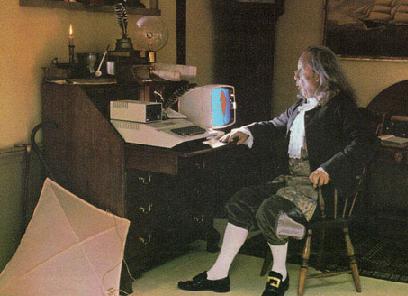
ABOVE: Apple computer advertisement (circa 1980’s)
Today I thought I would introduce you to some of the other blogs that are dealing with the Revolutionary War and Colonial times. A quick Google search identifies a plethora dedicated to this era. Unfortunately, the vast majority of them are either very amateur or woefully out of date. I spent some time this weekend sifting through the Internet to identify the cream of the crop in Revolutionary War blogs. Here are my findings:
Boston 1775: This blog focuses on history, analysis, and unabashed gossip about the start of the American Revolution in Massachusetts. The author is particularly interested in the experiences of children in 1765-75. He has published scholarly papers and acted as a consultant for an episode of PBS’s History Detectives.
American Revolution Blog: This long-running blog covers all aspects of the Revolution from battles to politics. It is maintained by two history buffs, the pastor of Olney Baptist Church in Olney, MD and a former graduate student of history.
American Revolution and Founding Era: This blog explores the founding of the United States of America, including topics such as the causes, weapons, battles, and personalities of the American Revolution as well as the Constitution, the early Presidents, the War of 1812, and the expansion of the United States.
A Miniature History of the American Revolution: This is a blog about the battles of the American Revolution. The tone is scholarly and includes original accounts of military actions that have not been well discussed. Periodic posts discuss the hobby of military miniatures used to illustrate specific battles.
British Soldiers, American Revolution: This blog is quote: “A place for information about British soldiers who served during the American Revolution, 1775-1783. Thousands of soldiers wore red coats, but little is known about them as individuals. This site will change that, soldier by soldier.”
The 2d Virginia Regiment: This is the blog of the 2d Virginia Regiment, a group of dedicated historians with a love of history who represent the life and times of the common Continental soldier. The 2d recreates the entire Revolutionary War scene through encampments and battlefield reenactments.
Walking the Berkshires: This award-winning blog is quote “…an eclectic weaving of human narrative, natural history, and other personal passions with the Berkshire and Litchfield Hills as both its backdrop and point of departure.”

Friday, 18 March 2011
U.S. Marshal Edward Carrington
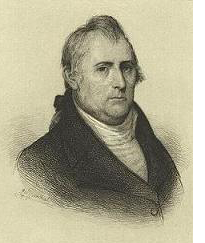 As a technical-writer for the U.S. Marshals Service, I have the privilege of working with some of the most dedicated people in federal law-enforcement. No other division under the Department of Justice can boast the history of the USMS. From its storied establishment in 1789 by George Washington, to its long list of noteworthy marshals including Frederick Douglass and Wyatt Earp, the USMS is the oldest, and in my opinion, the finest agency in the country. As a Virginia resident I am particularly interested in those who wore ‘the Star’ for my home state.
As a technical-writer for the U.S. Marshals Service, I have the privilege of working with some of the most dedicated people in federal law-enforcement. No other division under the Department of Justice can boast the history of the USMS. From its storied establishment in 1789 by George Washington, to its long list of noteworthy marshals including Frederick Douglass and Wyatt Earp, the USMS is the oldest, and in my opinion, the finest agency in the country. As a Virginia resident I am particularly interested in those who wore ‘the Star’ for my home state.
Edward Carrington was the first United States Marshal for the state of Virginia. Born in Cumberland County in 1748, he was a successful attorney who managed a large plantation as well as his family’s estate. He was also active in politics to the point of becoming a close confidant of George Washington’s. Carrington was approached by Washington to advise him on the growth of Thomas Jefferson’s Republican Party in the Old Dominion. He also provided critiques of potential cabinet candidates and offered opinions on what qualifications should be necessary for political appointments.
As a soldier Carrington served in the First Continental Artillery during the Revolutionary War. He rose to the rank of Lieutenant Colonel and was tasked as the quartermaster-general for Nathaniel Green’s Southern Campaign. During his service Carrington commanded artillery units in engagements against the redcoats at Hobkirk’s Hill and Yorktown. His military service off of the battlefield was equally noteworthy. In addition to being appointed to meet with British representatives to discuss an exchange of prisoners, Carrington was tasked with managing the selling of goods and property confiscated by the Continental Army.
After the British surrendered in 1781, Carrington returned home to practice law and manage his family’s properties. In 1785, and again in ’86, he was nominated as a delegate to represent the state of Virginia at the Continental Congress. In the spring of 1789, Carrington volunteered his services to the new government. Later that year, the United States Marshal Service was established by President Washington who formed the first federal law-enforcement agency under the Judiciary Act of September 24, 1789. Section 27 of that act reads:
And be it further enacted, That a marshal shall be appointed in and for each district for a term of four years, but shall be removable from office at pleasure, whose duty it shall be to attend the district and circuit courts when sitting therein, and also the Supreme Court in the district in which that court shall sit.(b) And to execute throughout the district, all lawful precepts directed to him, and issued under the authority of the United States, and he shall have the power to command all necessary assistance in the execution of his duty, and to appoint as shall be occasion, one or more deputies...
In appreciation for his many years of service, Carrington was appointed as the U.S. Marshal for the District of Virginia at the age of 41. He held the position for a little over 2 years (1789-1791) before he was appointed as the state’s Supervisor of Distilled Spirits.
In 1794, Carrington temporarily retired from public service while maintaining his friendship with Washington. When President John Adams was preparing to raise another volunteer army in anticipation of a war with France, Carrington was named as the supreme commander over an aging Washington. A few months later, America resolved the crisis with France and Washington died of pneumonia.
Carrington remained in Virginia and went on to serve two terms as the mayor of Richmond (1807-1810). During the first year of his first term, he served as the foreman on the jury for the Aaron Burr treason trial. After finding Burr ‘not guilty’ Carrington returned to the mayor’s office where he continued to serve until October 28, 1810, when he died at the age of 62.
References:
USMS website: The First Generation of U.S. Marshals
Congressional Biography: Edward Carrington
Constitution.org: Judiciary Act of September 24, 1789
Hopkins, Garland Evans. Colonel Carrington of Cumberland

Newer | Latest | Older
 Whenever someone asks what sparked my interest in American history, I always give the same answer, my parents. Over the years I had some excellent teachers who cultivated my interest, but no one else promoted the subject more than my mom and dad. Looking back I fondly recall dozens of family trips to historical sites like Monticello, Gettysburg, Williamsburg and the Drake Oil Well. One of our favorite places, Fort Ligonier, wasn’t too far from our home in Pittsburgh. I remember traveling there on a number of occasions and credit that site in particular for my interest in 18th-century history.
Whenever someone asks what sparked my interest in American history, I always give the same answer, my parents. Over the years I had some excellent teachers who cultivated my interest, but no one else promoted the subject more than my mom and dad. Looking back I fondly recall dozens of family trips to historical sites like Monticello, Gettysburg, Williamsburg and the Drake Oil Well. One of our favorite places, Fort Ligonier, wasn’t too far from our home in Pittsburgh. I remember traveling there on a number of occasions and credit that site in particular for my interest in 18th-century history. Originally referred to as “The Post at Loyalhanna,” Ligonier came under fire on October 12, 1758 during the French and Indian War. Still under construction, the garrison was barely able to repel its attackers who boasted much higher numbers. After decimating British troops who were stationed outside the walls, the French and Indians were driven back by artillery. As darkness fell the remaining forces renewed their attack before retreating back into the woods. The casualty reports following the four-hour assault differed greatly as the French reported taking 100 scalps and seven prisoners, while the British only reported 12 killed, 18 wounded, and 31 missing.
Originally referred to as “The Post at Loyalhanna,” Ligonier came under fire on October 12, 1758 during the French and Indian War. Still under construction, the garrison was barely able to repel its attackers who boasted much higher numbers. After decimating British troops who were stationed outside the walls, the French and Indians were driven back by artillery. As darkness fell the remaining forces renewed their attack before retreating back into the woods. The casualty reports following the four-hour assault differed greatly as the French reported taking 100 scalps and seven prisoners, while the British only reported 12 killed, 18 wounded, and 31 missing.








 As a technical-writer for the U.S. Marshals Service, I have the privilege of working with some of the most dedicated people in federal law-enforcement. No other division under the Department of Justice can boast the history of the USMS. From its storied establishment in 1789 by George Washington, to its long list of noteworthy marshals including Frederick Douglass and Wyatt Earp, the USMS is the oldest, and in my opinion, the finest agency in the country. As a Virginia resident I am particularly interested in those who wore ‘the Star’ for my home state.
As a technical-writer for the U.S. Marshals Service, I have the privilege of working with some of the most dedicated people in federal law-enforcement. No other division under the Department of Justice can boast the history of the USMS. From its storied establishment in 1789 by George Washington, to its long list of noteworthy marshals including Frederick Douglass and Wyatt Earp, the USMS is the oldest, and in my opinion, the finest agency in the country. As a Virginia resident I am particularly interested in those who wore ‘the Star’ for my home state.